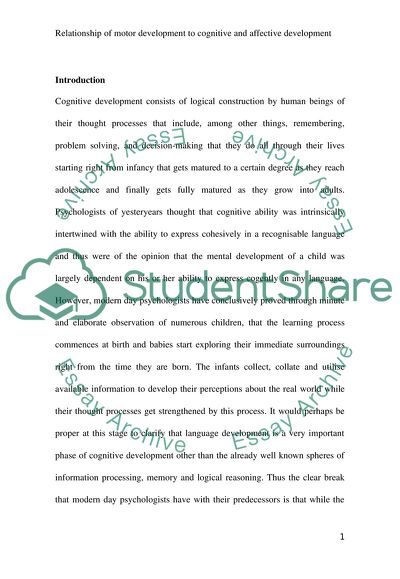Cite this document
(The Healthy Young Child Term Paper Example | Topics and Well Written Essays - 2000 words, n.d.)
The Healthy Young Child Term Paper Example | Topics and Well Written Essays - 2000 words. Retrieved from https://studentshare.org/psychology/1724376-the-healthy-young-child-0-3years-a-2000-word-written-assignment-which-demonstrates-the-students-understanding-of-the-relationship-of-motor-development-to-cognitive-and-affective-development-in-the-process-of-learning
The Healthy Young Child Term Paper Example | Topics and Well Written Essays - 2000 words. Retrieved from https://studentshare.org/psychology/1724376-the-healthy-young-child-0-3years-a-2000-word-written-assignment-which-demonstrates-the-students-understanding-of-the-relationship-of-motor-development-to-cognitive-and-affective-development-in-the-process-of-learning
(The Healthy Young Child Term Paper Example | Topics and Well Written Essays - 2000 Words)
The Healthy Young Child Term Paper Example | Topics and Well Written Essays - 2000 Words. https://studentshare.org/psychology/1724376-the-healthy-young-child-0-3years-a-2000-word-written-assignment-which-demonstrates-the-students-understanding-of-the-relationship-of-motor-development-to-cognitive-and-affective-development-in-the-process-of-learning.
The Healthy Young Child Term Paper Example | Topics and Well Written Essays - 2000 Words. https://studentshare.org/psychology/1724376-the-healthy-young-child-0-3years-a-2000-word-written-assignment-which-demonstrates-the-students-understanding-of-the-relationship-of-motor-development-to-cognitive-and-affective-development-in-the-process-of-learning.
“The Healthy Young Child Term Paper Example | Topics and Well Written Essays - 2000 Words”. https://studentshare.org/psychology/1724376-the-healthy-young-child-0-3years-a-2000-word-written-assignment-which-demonstrates-the-students-understanding-of-the-relationship-of-motor-development-to-cognitive-and-affective-development-in-the-process-of-learning.


